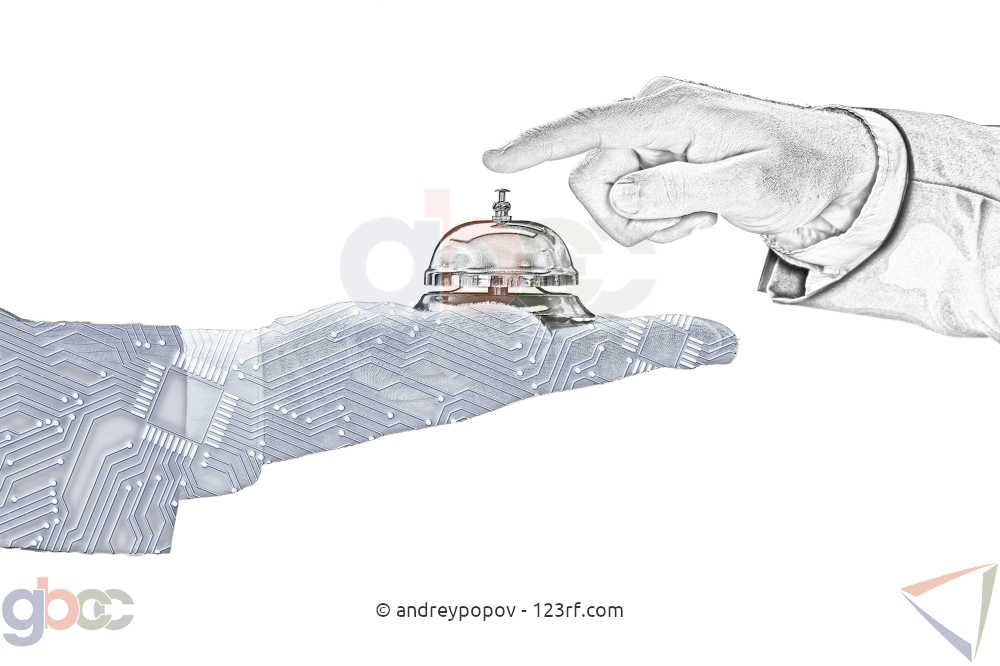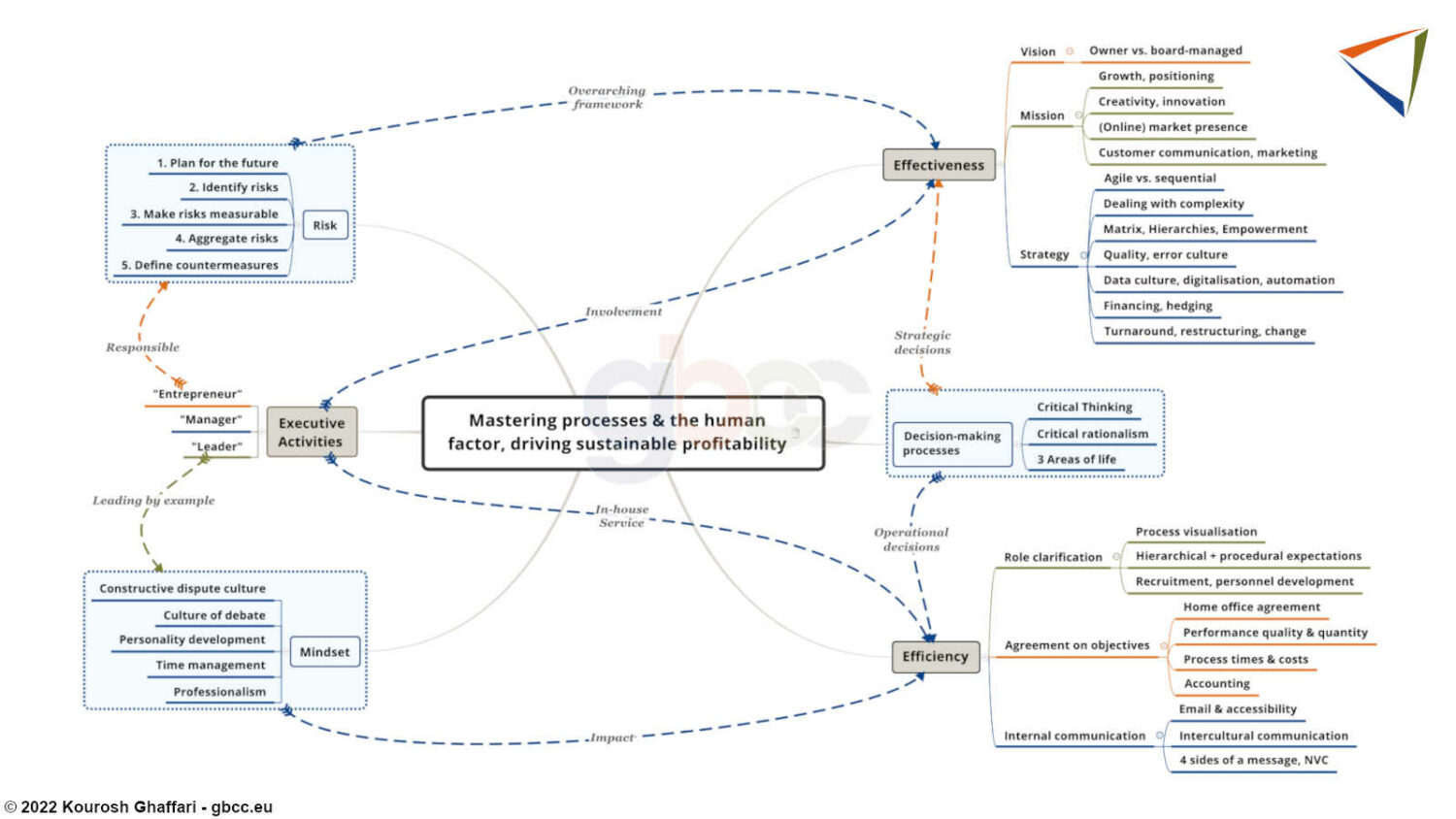
In this article, I will give you an overview of the factors that need to be considered when optimising processes.
People, not software, optimise processes!
Do you want your employees to actively optimise internal processes and communicate successfully? In this article, I will give you an overview of the factors that need to be considered when optimising processes.
Digitalisation and automation are the wrong way to start process optimisation
If you are interested in the topic of “process optimisation” and google it, you will find numerous providers of application software and IT systems. “Digitalisation” and “automation” go hand in hand.
Many of them are niche providers who offer the ability to optimise a very specific, narrowly defined process: how can you make invoicing, purchasing, payroll, etc., more efficient? If you are looking for solutions to optimise your entire business’ processes, these isolated solutions will not help you.
But you will also find many enterprise-wide system solutions and associated consulting services that offer the prospect of a holistic solution. This sounds much more promising. The bad news is that if you try to optimise your processes from this point of view, you are likely to miss the mark.
I would like to illustrate this with a scenario.
Clarification of mutual expectations, co-ordination of mutual behaviour
The head of a large family is in control of the household. Everyone knows, for example, that dinner is at 7pm, and everyone is at the table on time. The kitchen is prepared. They also know who has what preferences when it comes to meals. Even when it comes to keeping the rooms and common areas tidy, the usual procedures are coordinated, and everyone shows consideration for each other.
Even when processes are coordinated, communication can be a challenge: Sometimes people shout at each other from door to door, which is unfortunately misunderstood and leads to annoying misunderstandings. Or there are unpredictable internal and external circumstances that keep disrupting the usual flow. So, the head of the family hires a butler to act as a servant to the house’s occupants and ensure better internal communication and coordination.
A system should be the butler and not the head of the family
The butler here is emblematic of the system used, which should be this:
It serves the employees who can do without it. It’s just not as efficient.

To stay with the scenario, suppose the head of the family is not in control of their household. It is not clear which room should be cleaned first, and no one arrives on time for dinner. So, there is a lot of friction about what goes on the table when and which room is cleaned when. In short, everyone does what they want in the household.
Can the head of the family hire a butler to keep things in order? Yes, they can, and it works: the butler keeps order! The butler decides when to eat what and when to tidy which room without regard to the needs or other habits of the household members. The problem, which is unfortunately often overlooked, is the price to be paid:
As the butler becomes the de facto head of the household, the residents feel increasingly strange and uncomfortable in their own house, including the head of the family themselves. They all feel that they serve the butler – not the other way round! They rebel against the current and all future butlers.
So, when it comes to optimising processes, the order of things must be clear:
First learn to communicate successfully, then implement a new system
First, make sure everyone’s behaviour is aligned,
then think together about the efficiency of the processes, which may include the purchase of an IT system.
The problem is your business is a complex entity. As such, it has a “life of its own” that cannot be easily explained and controlled. This is because businesses are made up of people, with all their egos, moods and quirks.
In your company’s processes, the individual components are interlinked in a “complex-causal” way: many causes have many effects and interactions that can occur with a time lag.
If we pick out two components and treat them separately from the rest, we tend to create chaos in the system. A complex system can only be developed as a whole towards the desired direction. The long-distance effects and interactions of all measures must be kept in sight.
Business-related articles for business owners and decision-makers
My way of working requires that I always look at companies as a whole. My articles are intended to provide inspiration and make managing a business in a complex environment a little easier. In the image below, I have visualised the topics of my publications for you.
I hope you won’t be put off if the picture looks complicated at first glance. The keywords are briefly explained below the image and linked to the corresponding articles. So you can browse at your leisure and find out more about the content that concerns or interests you.

Optimising processes sustainably and economically: the components
At the moment, I see risk management as the first among equals. The world has long since gone off the rails, and we can no longer afford to focus solely on the costs and revenues of the next reporting period. We have no choice but to look at the medium- and long-term future of the company and think strategically about how to deal with opportunities and risks.
These strategic considerations will provide the overarching framework for the goals that we will work together to achieve:
- The vision: where do we want to go?
- The mission: who are we doing what for?
- The strategy: how are we going to do it?
Once you have defined the business objectives and are working together towards it, the following question arises: to what extent is what your people are doing really effective in achieving the business objectives? Addressing the “effectiveness” of activities will help you to do the “right thing” to achieve your defined goals and to achieve the intended impact you associate with goal achievement.
Only when effectiveness has been positively confirmed does the question of “efficiency” Working efficiently means working in such a way that the resources used and the result achieved are in a favourable cost-benefit ratio. If you want to increase efficiency, then you need to look at how your people can get the job done faster and with less effort. I would like to highlight three of the most important aspects:
- Role clarification: what do we expect from each other?
- Agreement on objectives: how do we make them measurable?
- Internal communication: why do the lines of communication become tangled when discussing the same topic?
It is usually a manager’s job to optimise processes. The cacophony that results from the fact that the roles expected of them are usually not clear is one of the biggest productivity killers in companies. It is true that “executive activities” are what every company desperately needs – but not necessarily a hierarchical structure!
And last but not least, the individual and their mindset. This is the key to sustainable process optimisation. And this is where I come in: it’s about actively involving employees and empowering them to become relaxed, satisfied creators of your company’s future.
